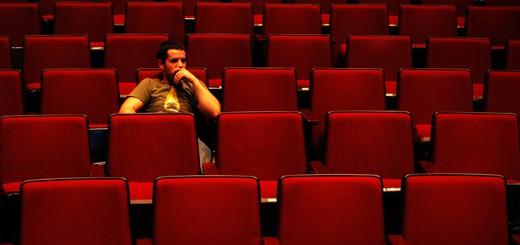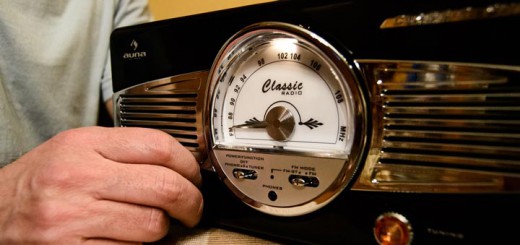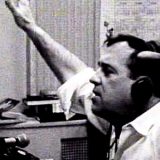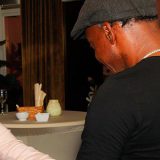Podcasting Is The New Radio? Huh?
As 2015 wound down, a phrase kept popping up that has me somewhat mystified. “Podcasting,” it declared, “is the new radio.” I’m in the dark as to what backs up this statement. Maybe it’s nothing more benign than pride and optimism. The trouble is, going off in this direction is hazardous to podcasting’s development.
By claiming, or imagining, podcasting is somewhere it’s not, we cut ourselves off from what we can—make that need to—learn from radio’s near-century of audio entertainment and information dominance.
Let’s Look at Some Numbers
Despite a decline in listenership over the last decade, the data show that over 90% of Americans listen to radio. Podcasting’s penetration (or reach) is closer to 35%. Radio is an omnibus supplier of audio news, entertainment and information. For legal, financial and production reasons, podcasting is restricted primarily to talk formats, and crippled formats at that. The timeless quality of podcasting means that in the wake of breaking news or natural disasters, listeners won’t be tuning in to Serial or WTF.
History’s Mystery
A better podcasting battle cry for 2016 might be, “Podcasting can learn to be the new radio.”
First of all, most of the podcasts that get kudos from practitioners and listeners alike have their roots in modern-day radio. That great storytelling format of Ira Glass and his NPR colleagues? NPR borrowed it from the BBC back in 1979, when it took to the air in the midst of the Iranian hostage crisis. What pundits are calling a revolutionary style of storytelling was being done on the radio before, well before we made it out of AM Top 40 and into free-form FM.
Want to be a great radio storyteller? Spend some time with BBC Radio 4. Listen to the music specials on BBC Radio 2. There’s nothing like learning from the masters.
Where Does That Leave Podcasting?
When radio moved from military and amateur applications into the home, it was quite a mess. With low barriers to entry (you didn’t need a license in those days), entrepreneurs jumped into broadcasting feet first. (That is to say, they didn’t lead with their heads.) Who were they? They were people who wanted to use radio to promote their primary businesses. Amidst the leading institutions were
- KDKA, owned by Westinghouse in the hope of selling more Westinghouse radios;
- WLS, the World’s Largest Store, owned by Sears, Roebuck and Company to promote their stores;
- WGN, the World’s Greatest Newspaper, owned by the Chicago Tribune to guard against the erosion of its readership;
- WABC, owned by the American Telephone and Telegraph Co. (AT&T) to protect it’s standing in relaying information from place to place;
- KFI, owned by Los Angeles car dealer Earl Anthony, who anticipated the introduction of radios into cars;
- KFRC, owned by San Francisco Cadillac dealer Don Lee.
They were joined by preachers, politicos and snake-oil salesmen, all of whom saw radio as a way to circumvent the gatekeepers in the newspaper business and push their positions, and their products, directly into the living rooms of the wary and unwary.
Prior to 1924, the government had allocated a range of frequencies to radio broadcasting. Getting a license was a matter of paperwork, which some broadcasters even filled out. After that, you grabbed a frequency and started broadcasting. The result was, as you might imagine, a cacophony of voices, more than the frequencies could support. Finding and listening to a station was a challenge. Many broadcasters were drowned out by more powerful signals emanating from the same locale. Others hopped from place to place on the dial, hoping to find a spot where they could be heard.
Does any of this sound familiar? It should. It’s roughly where independent podcasting is now. The flood of content, the hobbyist-centered interface, the uneven quality and the wild mix of honest opinions and all-you-can-afford sales pitches are reminiscent of radio’s early days.
How’d They Do It?
Rather than proclaiming that podcasting has arrived or, worse, eclipsed radio in the audio entertainment realm, we should be asking how radio got from there to here. How can podcasters get to 90%-plus penetration? How can we bring some order to the chaos that makes podcasting both exciting and off-putting for listeners?
It wasn’t until 1924, with the creation of the Federal Radio Commission (the forerunner of the FCC) that stations were forced to stick to a single frequency and certain hours of operation. It was a sorely needed structure that gave the industry the opportunity to grow. Meanwhile, technology improved the radio receiver. They became more reliable, easier to operate, and better sounding.
Whatever radio did, it’s worth studying. In short order, radio receivers replaced the family piano as the single source of entertainment in the home. Outside the home, radio became the number one source of entertainment and advertisements, reaching listeners in situations where other media hadn’t a prayer of making personal contact.
Podcasting as the new radio? Hardly.
Over 90% of adults, when asked if they wanted radio in their new cars, emphatically replied in the affirmative. They didn’t want 20,000 podcasts to choose from on the highway. They wanted one or two good radio stations, which they could access at the touch of a button.
Podcasting isn’t the new radio. It’s not even close to radio. But, it can learn a lot from radio if we stop pretending we’ve already eclipsed it and admit we have a ways to go before we understand podcasting’s potential.










This is a superb analysis. I would add one more obstacle that podcasting has to overcome: the challenges of new technology by people not accustomed to using it. Specifically, it just takes a push button or knob push to turn on a radio. Many people are baffled by their mobile devices/personal computers and how to access and download podcasts. This is not dissimilar from the learning curve for many smart phone users.
By the way, I am a veteran of WLW-AM/Cincinnati (and managed its 50th anniversary celebration in 1972), another one of the earliest stations (owned by appliance magnate Powel Crosley), which also fits the model that Jay describes in his post.
Thanks, as always, Dave for you comments.
This ease-of-use issue is probably one of the most important facing podcasting in 2016. It’s possible that if podcasters don’t come up with a solution we’ll have a standard forced on us by the automotive industry. Not something I’m looking forward to.
— jay